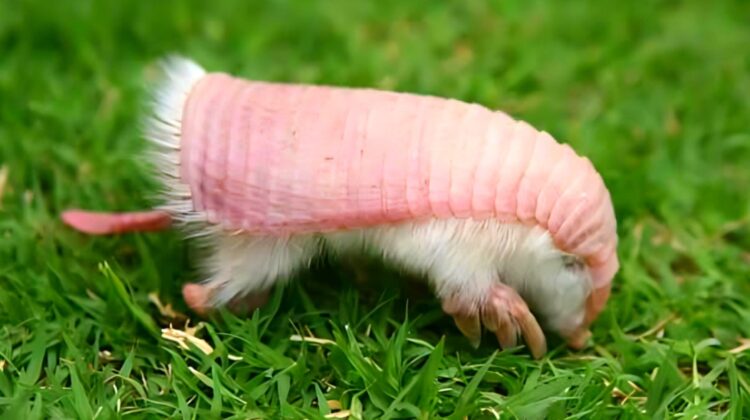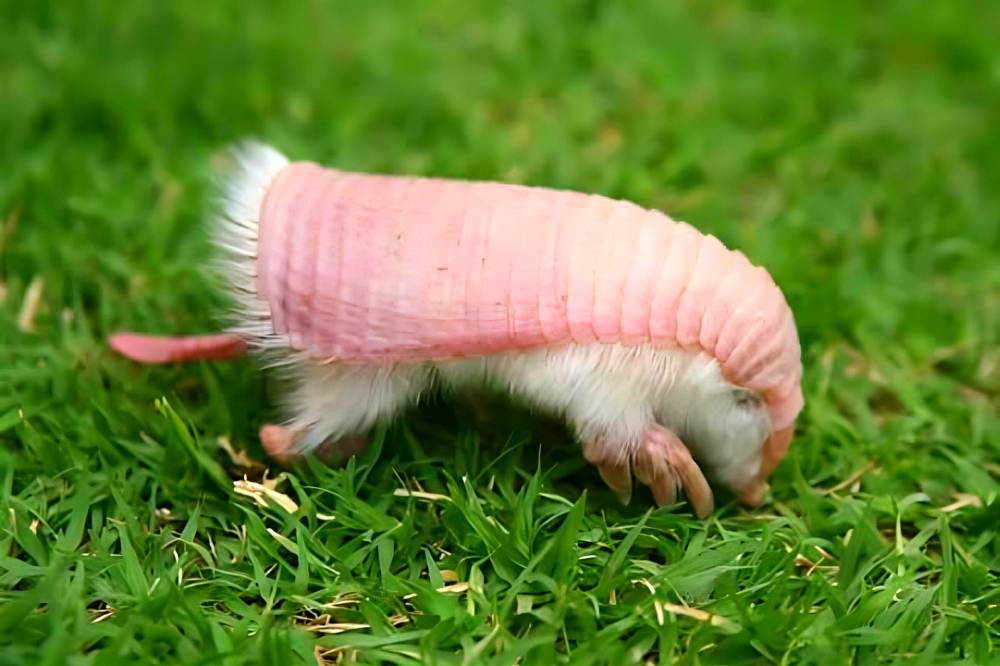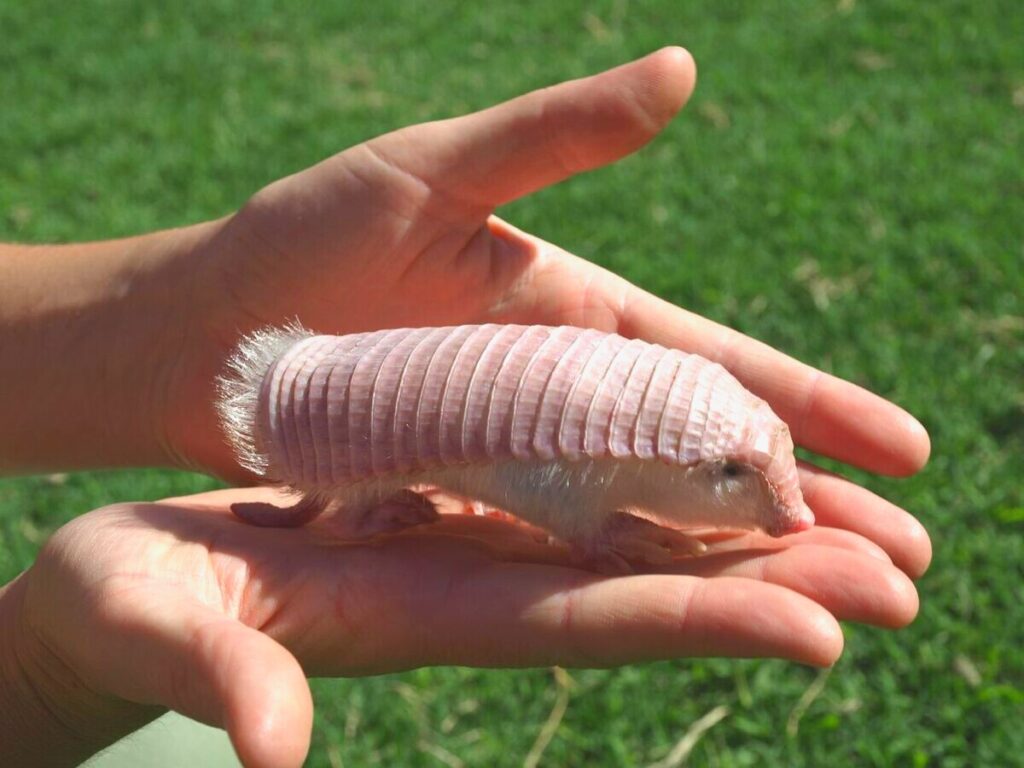
The pink fairy armadillo (Chlamyphorus truncatus) is one of the smallest species of armadillos, and is also known as the Pichiciego. These fascinating creatures are native to the sandy plains and grasslands of Argentina, and are named after their unique, pale pink coloration and diminutive size.

Here are some interesting facts about this amazing little creature:
- Appearance: The pink fairy armadillo is covered in a tough, armor-like shell that is pinkish-white in color. They have small, beady eyes and long, pointed ears that are capable of folding back to protect the ear canal from sand and debris. Their legs are short and stout, with powerful claws for digging through soil.
- Size: Pink fairy armadillos typically measure about 4 to 5 inches in length, not including their tail, which can add another 3 to 4 inches.
- Diet: These armadillos primarily feed on insects and other invertebrates, which they find by burrowing into the soil with their powerful front claws.
- Habitat: Pink fairy armadillos are found in the sandy plains and grasslands of Argentina, where they dig deep burrows to protect themselves from predators and the extreme heat of the sun.
- Behavior: These armadillos are primarily nocturnal, meaning they are active at night. During the day, they retreat to their burrows to avoid the heat of the sun. They are also solitary animals, and typically only come together for breeding.
- Endangered: The pink fairy armadillo is considered a vulnerable species, due to habitat loss, hunting, and the exotic pet trade. Efforts are underway to conserve their natural habitat and protect these unique creatures.
- Reproduction: Females give birth to a single offspring each year, which is born fully formed and independent.





Overall, the pink fairy armadillo is a fascinating and unique creature that is worth learning more about. With their delicate pink coloring and remarkable adaptations for life underground, they are a true marvel of nature. However, it’s important that we do our part to protect these vulnerable animals and ensure that they continue to thrive in the wild.

Leave a Reply